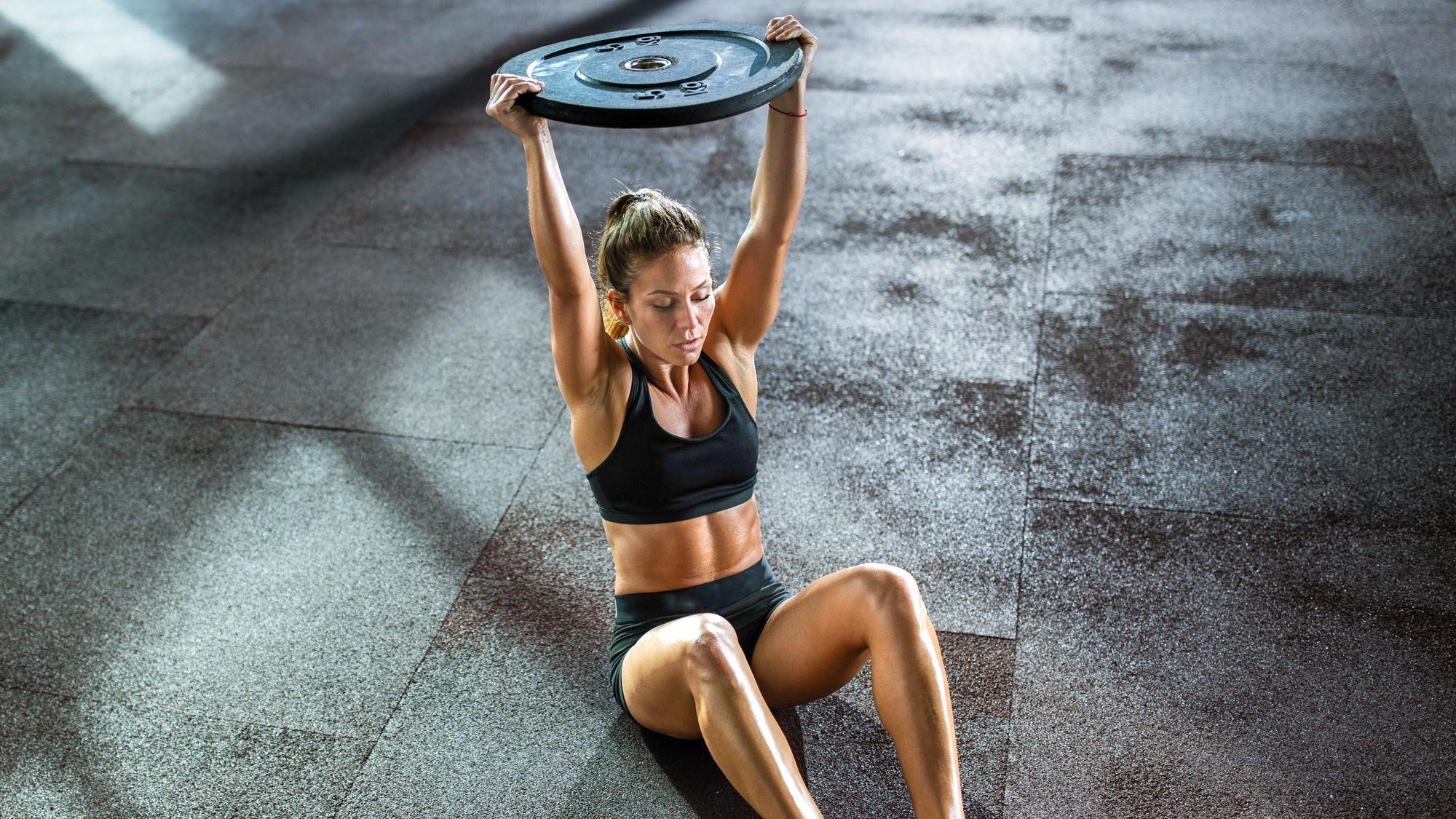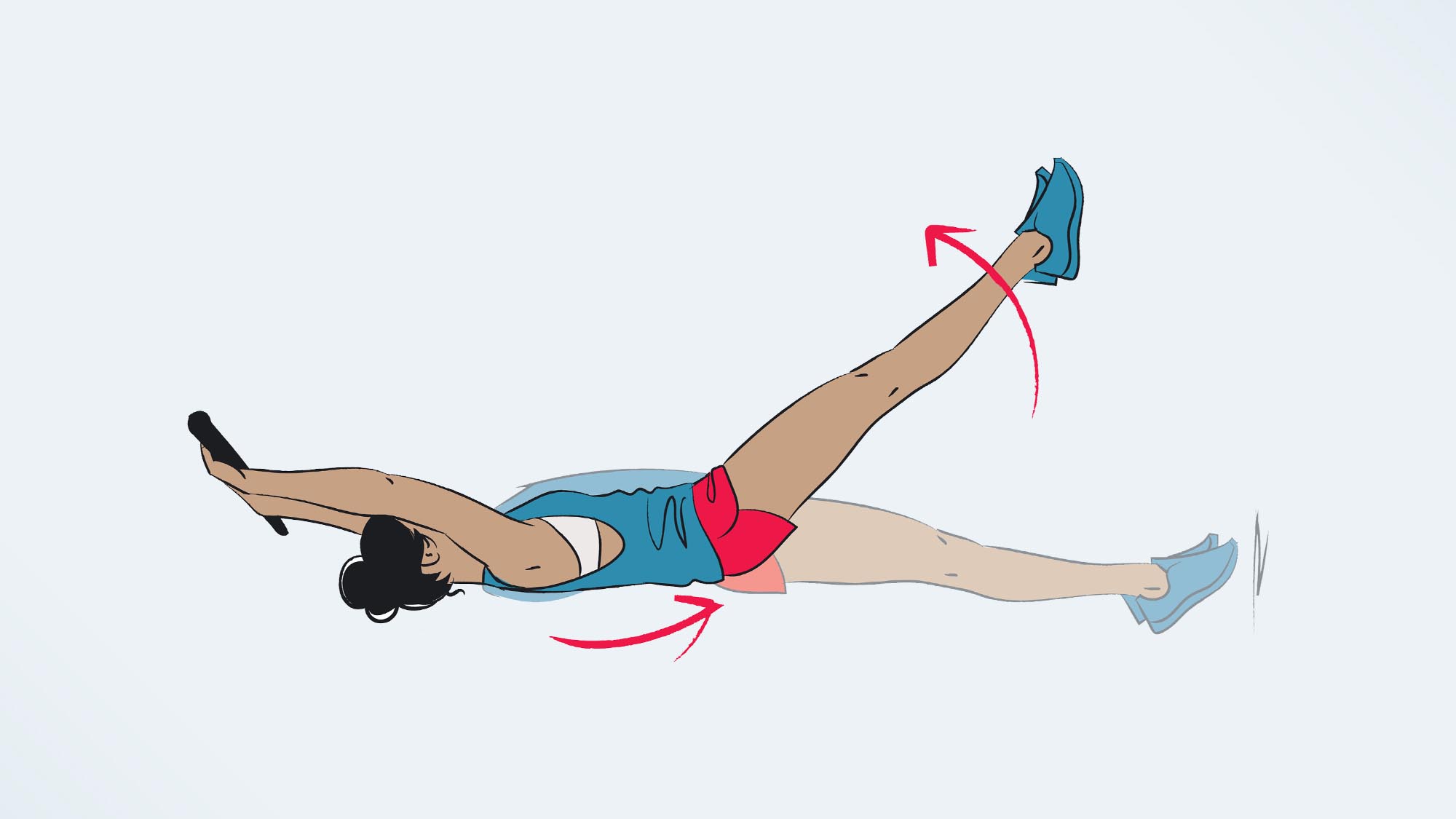
If you’ve ever performed a loaded hollow hold exercise, you’ll know that it isn't your everyday workout. While some people think it’s all about working the core muscles, which it definitely does, it’s much more than that.
For those who aren’t familiar, the loaded hollow hold is an advanced variation of the classic hollow body hold, which involves maintaining a specific position lying on your back, engaging your core muscles to create a "hollowed" shape. The “loaded” variation simply refers to an additional weight, such as one of the best adjustable dumbbells or a plate, that is held in the hands or placed on the legs while performing the exercise.
PT and fitness writer at Fitness Brain, James Dixon, likens this exercise to “a plucky character in a novel — strong, resilient, and always engaged, even under pressure”. It targets the core muscles, specifically the rectus abdominis (top layer of the abs), the transverse abdominis (the deep-lying stabilising muscles), and the obliques (the waist muscles). It also works your lower back and hip flexors — intensifying the demand and benefits on these groups.
The benefits this brings include strengthening of the core muscles and — eventually — more defined abs, spinal stability (to help protect your lower back and improve posture), and overall functional strength.
With so many benefits to be had by undertaking this exercise, I thought I’d put it to the test by integrating loaded hollow holds into my fitness schedule every day for an entire week. My goal? To see just how well this exercise could improve my core strength and stability. Would it even help to give me more defined abs? Here’s what I found out.
How to do a loaded hollow hold
Before we get into my results after doing a loaded body hold every day for a week, let’s look at how this exercise should be performed.
According to Fitness instructor and founder of BBX Fitness, Bally Bhogal, a loaded hollow hold can be properly performed by following these simple steps:
Get instant access to breaking news, the hottest reviews, great deals and helpful tips.

- Step 1: Grab the required equipment
- This could be a weighted plate or dumbbell. It might be a good idea to find a mat, too, if you’re performing the exercise on a hard floor.
- Step 2: Get into your starting position
- Lie on your back with your arms extended overhead and your legs straight. Your lower back should be pressed into the floor. Hold the weighted plate or dumbbell with both hands and lift it off the ground.
- Step 3: Engage the core
- Lift your shoulders and legs off the ground simultaneously. Keep your lower back pressed into the floor, forming a slight c-curve with your body. This is the hollow body position.
- Step 4: Hold and breathe
- Maintain the hollow body position while holding the weight. Focus on keeping your core engaged and your lower back pressed into the floor.
- Step 5: Bring the weight back to the floor
- Once the weight is out of your hands, relax. Rest for 30 seconds and get ready for the next set.
Loaded hollow hold: Form mistakes to look out for
It's important to be mindful of the common mistakes people make while performing a loaded hollow hols as this will help you prevent injury. Some errors to watch out for, according to Bhogal, include:
Arching the back: Try to avoid arching your lower back. “This can lead to back pain, which no one wants!” explains Bhogal. “Press it into the floor to engage your core and protect your spine.”
Lifting shoulders too high: Lift your shoulders off the ground while keeping them close to your body. Avoid shrugging or overexerting your neck muscles.
Dropping legs: Your legs should be lifted slightly off the ground. “Don't allow them to drop too low, as this may strain your lower back,” Bhogal adds.
But how many sets should you do? And how long should you hold the exercise for?
Dixon says this largely depends on your fitness level. However, he recommends a general guideline for the loaded hollow hold as:
Beginners: Start with 3 sets of 10-15 seconds.
Intermediate: 3-4 sets of 20-30 seconds.
Advanced: 4-5 sets of 40-60 seconds.
“Remember, it's always better to maintain good form for a shorter amount of time than to hold a position with poor form for longer,” Dixon explains. “Also, adequate rest between sets is essential, so a rest period of about 30 seconds to 1 minute between sets is recommended.
He also warns that, while it's safe, doing a loaded hollow hold every day for a week should be approached with caution since our muscles need rest days to rejuvenate.
“Performing this exercise daily without adequate recovery could lead to overuse and strain,” he advises.
“However, if executed mindfully and paired with proper recovery strategies, an individual might see improved core strength and stability, akin to a ballet dancer’s poised grace, even when life throws you off balance.”
I tried a loaded hollow hold every day for a week — here's what happened
So, how did I get on with my “loaded hollow hold every day for a week” challenge? Let me give you the lowdown, day by day:
Day 1
Armed with weights and determination, I kicked off day one of my week-long challenge at my local gym laid on an exercise mat. I’m no stranger to hollow hold exercises, but it had been a while since I focused so heavily on my core so before starting I did three sets of 10-second holds with no weight as a warmup.
Once warmed up, I felt ready to begin but I started with a very low weight (5kg) and, again, performed three 10-second sets, resting one minute in-between.
By the time I got to the last set, I definitely felt fatigued, especially in my core but felt like I still had some fuel in the tank.
Day 2
With a bit of residual soreness in the core from yesterday's workout, I hopped onto my exercise mat for day two of the loaded hollow hold challenge. Today, I decided to bump up the weight a bit. I grabbed a 7.5kg weight this time and, just like yesterday, performed three sets but lasting a little longer this time, at 15 seconds.
Surprisingly, I found that my body adapted quicker than I thought. Holding the hollow position with the added weight felt challenging but not overwhelmingly difficult. I paid extra attention to my form, ensuring that my lower back remained pressed into the mat and my legs and shoulders were lifted just off the ground. By the time I completed the last set, I was feeling the burn, but it was a satisfying one.
Day 3
Day three greeted me with a mild ache in my core muscles — a sure sign that this challenge was making an impact. But I didn’t let that stop me. I stuck to my routine and got down on the exercise mat. Today, I decided to up the ante again and grabbed a 10kg weight, performing four sets this time of the same 15-second holds.
The challenge was becoming more mental than physical at this point. Holding the hollow position was now a familiar sensation, but the added weight meant I had to focus even harder on fully engaging my core muscles. By the time I reached the end of the session, I was feeling the strain, but I also noticed that I was holding the position more steadily than before.
Day 4
Waking up on the fourth day, I realised I was just past halfway through my week-long challenge. This gave me some much-needed motivation. My core ached like never before, but I was eager to see how much progress I could continue to make, so I decided to up the weight again, this time with a 12.5kg weight. I also upped the sets to four and with 20-second holds.
Since I was already quite sore, this session felt like a true test of my core strength. The weight definitely made its presence known, but I was determined to push through. On a positive note, my mind and body were starting to sync up in a way that allowed me to better gauge how to distribute the load between my upper and lower body. The burn during the holds was intense, but I had certainly developed a newfound appreciation for the stability that a stronger core provides.
Day 5
Day five arrived, and I could feel the effects of my hard work settling into my core. Since yesterday was such a slog, I decided to stick with the same 12.5kg weight, set amount and hold length. I thought it was important to change something though, so instead of just performing standard loaded hollow holds, I incorporated a variation. I tried extending my arms overhead while keeping my lower back pressed into the mat.
This variation not only added an extra layer to the challenge but it also helped break the monotony of the workout, which had begun to set in. My core was truly engaged from various angles, and by the end of the session, I was sweating and breathing heavily. A stark reminder that even the smallest of adjustments can help up the intensity.
Day 6
As I approached the penultimate day of the challenge, I was looking forward to giving my core a rest from this exercise every day. Since my body felt so fatigued, I didn’t feel ready to up the weight again, or do any variations, so I kept it at 12.5kg and stuck to the standard exercise. However, I did decide to increase the duration of each hold to 30 seconds, and up the sets to five.
I’m not going to lie, those extra five seconds felt like an eternity, especially when coupled with the weight. Maintaining proper form and tension was becoming a battle of the body and mind, but I powered through. On the plus side, my core was feeling solid, and I was beginning to see some visible changes in my abdominal area.
Day 7
The final day had arrived, and I was relieved to see this challenge come to an end. Since it was my last day, I decided to go all out and upped my weight to 15kg. I aimed for longer holds as well — this time at 45 seconds for each set.
The burn was real, but I could tell that my core had undergone a transformation over the past week. The definition was more pronounced, and I certainly felt stronger in that area. As I held the position during the final set, I felt a massive wave of accomplishment come over me. Dropping that weight for the last time was a great feeling!
So, the big question: what was the overall result — did the challenge give me a better ab definition, for example?
Since ab definition is more related to nutrition (eating a calorie deficit to achieve a low fat percentage so that abs are more visible) I didn’t see as much of a visual transformation as you might expect. However, there was a small improvement in the definition I had, and my core felt stronger and more solid.
If you're thinking of giving the challenge a go yourself, remember to go easy on yourself and if you feel like you're pushing too hard, reduce the weight or the length of the hold.
Alternatively, you could incorporate loaded body holds into your regular gym sessions over a longer period of time while having your usual rest days in-between. This will allow you to recover properly while still reaping the rewards of a stronger core. Just remember to do them at the end of your weight session. The core is a stabilising group of muscles and is needed for support when weight lifting, so you don't want these muscles fatigued when lifting anything heavy, for example, as it could cause an accident.
More from Tom's Guide
- Forget planks — this seated ab workout sculpts your core in just 10 minutes
- I did 50 standing oblique crunches every day for a week — here’s what happened to my abs
- I did the Leaning Camel exercise every day for a week — here’s what happened to my body

Lee Bell is a freelance journalist and copywriter specialising in technology, health and fitness and how the latest innovations are shaking up the lifestyle space. From national newspapers to specialist-interest magazines and digital titles, Lee has written for some of the world’s most respected publications during his 12-plus years as a journalist.
